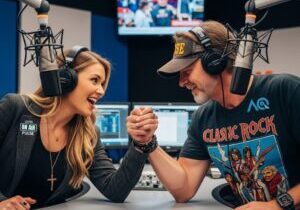
Here we are, 70 days until the election. Now that each convention has come and gone, we have a much better idea of what this race looks like. As I do every election cycle, I urge you to exercise your right to vote, and if you’re so inclined, play a constructive role in the process. I know we’ve all heard this before, but yes, this just might be the most important election of our lifetime.
And both conventions brought that out. Both parties pulled out all the stops, brought their A-games, and made their respective cases to the country. Whether you watched wall-to-wall, tuned in and out, only watched the highlights on TV or on social media, or ignored both events all together, there was a lot to take away from the proceedings, especially for those of us in radio.
I believe a key to taking away lessons from either or both sides is to take in the conventions as dispassionately as possible – witnessing them as branding statements. And through that lens, gaining an understanding and perspective of the tools that are now highly effective, as well as the traditions that no longer work as well as those that have held up over time. All were on display this summer, both in Milwaukee and Chicago.
So, here’s my take, and of course, I’d love to hear yours, provided we keep the conversation strategic and tactical, rather than political and divisive.
1. The power of in-person over virtual – You can sense a palpable vibe, whether you’re on-hand in the arena or watching the convention on some type of screen. Compared to 2020’s hollow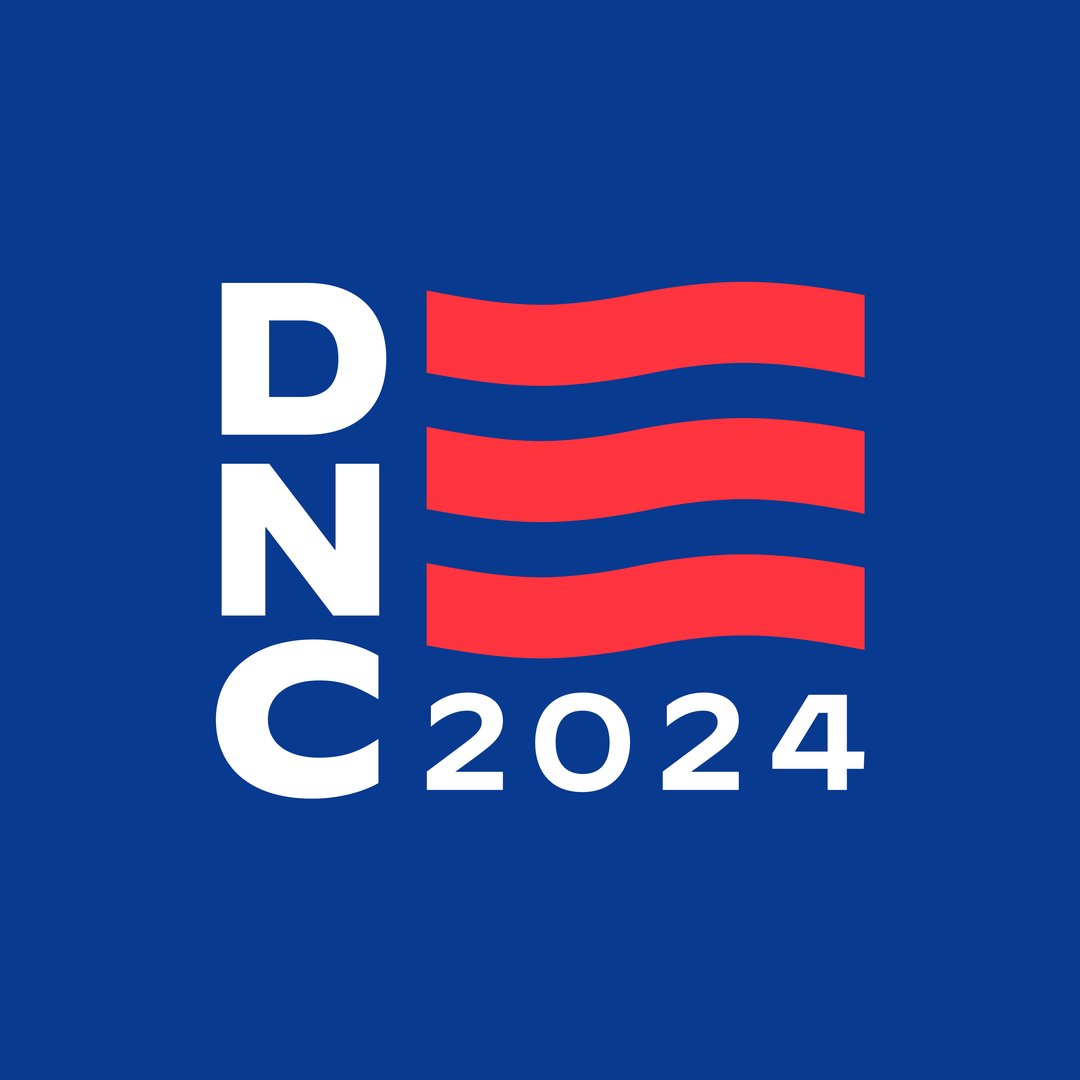 events due to the pandemic, we missed the opportunity to see both parties and their candidates in the familiar, frenetic environments we’d witnessed all our lives. Whether you follow politics or not, seeing it virtually on a platform like Zoom or Teams pales in comparison to it all taking place in a jam-packed arena.
events due to the pandemic, we missed the opportunity to see both parties and their candidates in the familiar, frenetic environments we’d witnessed all our lives. Whether you follow politics or not, seeing it virtually on a platform like Zoom or Teams pales in comparison to it all taking place in a jam-packed arena.
And that’s a reminder, as the great Marshall McLuhan famously taught us, “The medium is the message” (emphasis mine). In the summer of 2020, we were still pretty new at the virtual meeting thing, so the entertainment value and energy of both political conventions that year was very much missing.
Of course, we know this to be true in radio as well. Whether I’m moderating focus groups on Zoom or conducting them in person, it matters. I believe the same is true of a radio show that’s pre-recorded over live. And we know that in sales, showing up in person is so much more effective than sending an email, picking up the phone, or even setting up a Zoom meeting.
2. Production values matter – This is the case whether you’re staging a four-day convention or a national party, a concert festival, or a remote. I learned this first-hand from Beasley’s Heidi Raphael back in her promotion director days. How an event looks, feels, is produced, and connects with people can often even overshadow whoever’s performing (although who’s on the lineup card counts very much).
 In the case of both the RNC and DNC conventions, the production values were slick, colorful and vibrant. Pacing of both events might have been better, and that points to the necessity of why both sides continue to devote four entire prime time evenings to their festivities, when it all could be accomplished in half that time – and both would be more watchable, more “must see.”
In the case of both the RNC and DNC conventions, the production values were slick, colorful and vibrant. Pacing of both events might have been better, and that points to the necessity of why both sides continue to devote four entire prime time evenings to their festivities, when it all could be accomplished in half that time – and both would be more watchable, more “must see.”
Maybe the solution is to take prime coverage down to two nights, even though activities would continue all four days off camera. In that way, both the Dems and the GOP accomplish their sprawling agendas, but “We the people” only have to sit through a couple evenings of it.
It is also clear how difficult it is to construct an agenda when everyone wants a few minutes on that monster stage. But saying “no” in the weeks before the event to some people – politicians, advocacy, and entertainment – might have led to more streamlined – and shorter – prime time schedules. And that would have definitely extended time-spent viewing all four nights.
3. Leadership dictates vibe – This was one of my early lessons from Tom Bender (recipient of the Michigan Association of Broadcasters’ Lifetime Achievement Award a couple weeks back). A radio station takes on the personality of its program director. Or in political party terms, these conventions reflect the person at the top of the ticket. After last week, it’s pretty clear that the Joe Biden version of this event would have looked much different than the one we ended up seeing.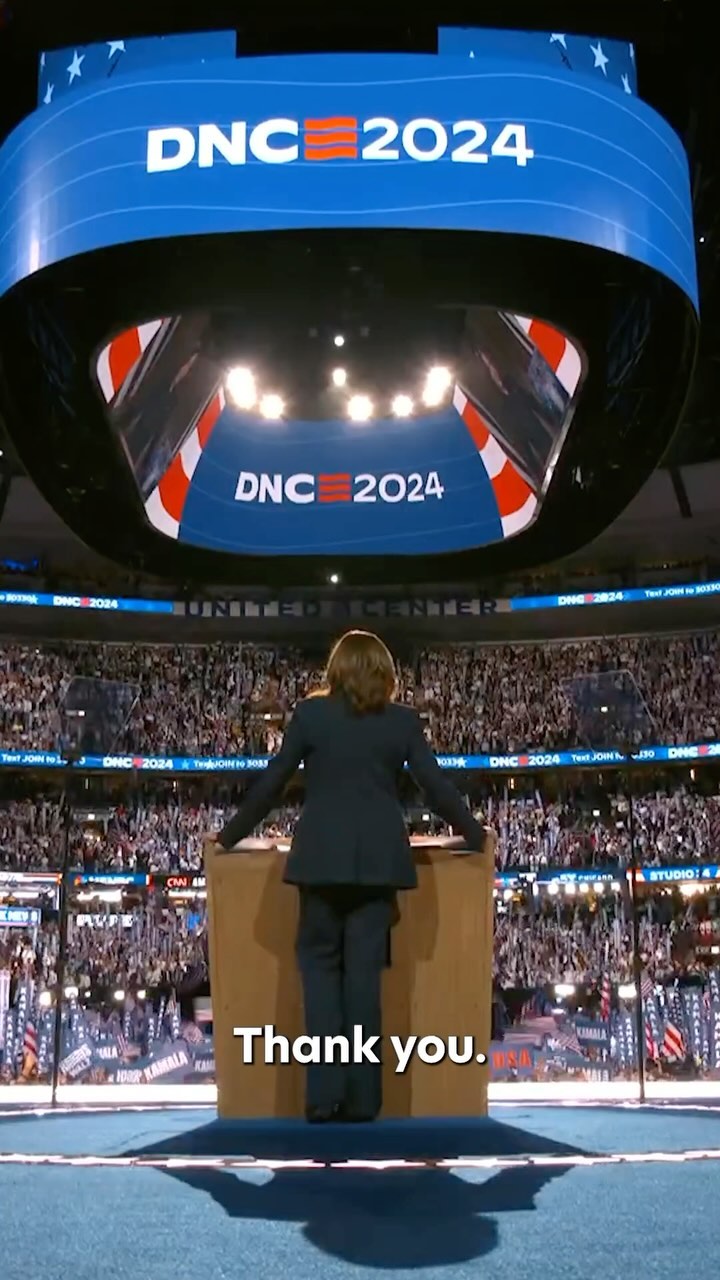
It also calls into question what seems to be happening in so many radio stations where a single programmer oversees multiple brands. It is nary impossible for him/her to assert their personality when they’re programming two, three, or even more stations. When we lament why so many stations sound lifeless, like they’re going through the motions, or at best, the same as most others, this is the likely a bit part of the reason.
The programmer in me was hard at work while watching the conventions, paying close attention to the overall look and feel of the arena and stages, the clothing choices, the signage, and of course, the music selections. None of these were made by random chance, but instead, were carefully thought out calculations from the planners on both sides. They matter. And in the case of both the RNC and DNC extravaganzas, Donald Trump and Kamala Harris could be felt in the buildings, the stands, the messaging, and the level of buzz over their four-day runs.
4. You have more time than you think – One of the interesting wrinkles in the DNC’s event is that Kamala Harris emerging as the presidential choice by the Democrats wasn’t really a fait accompli until roughly four weeks before the convention. While many things were obviously roughed into the agenda during the leadup when it was assumed Biden would run for re-election, the Kamala Harris curve ball obviously set up some tough deadlines and difficult challenges.
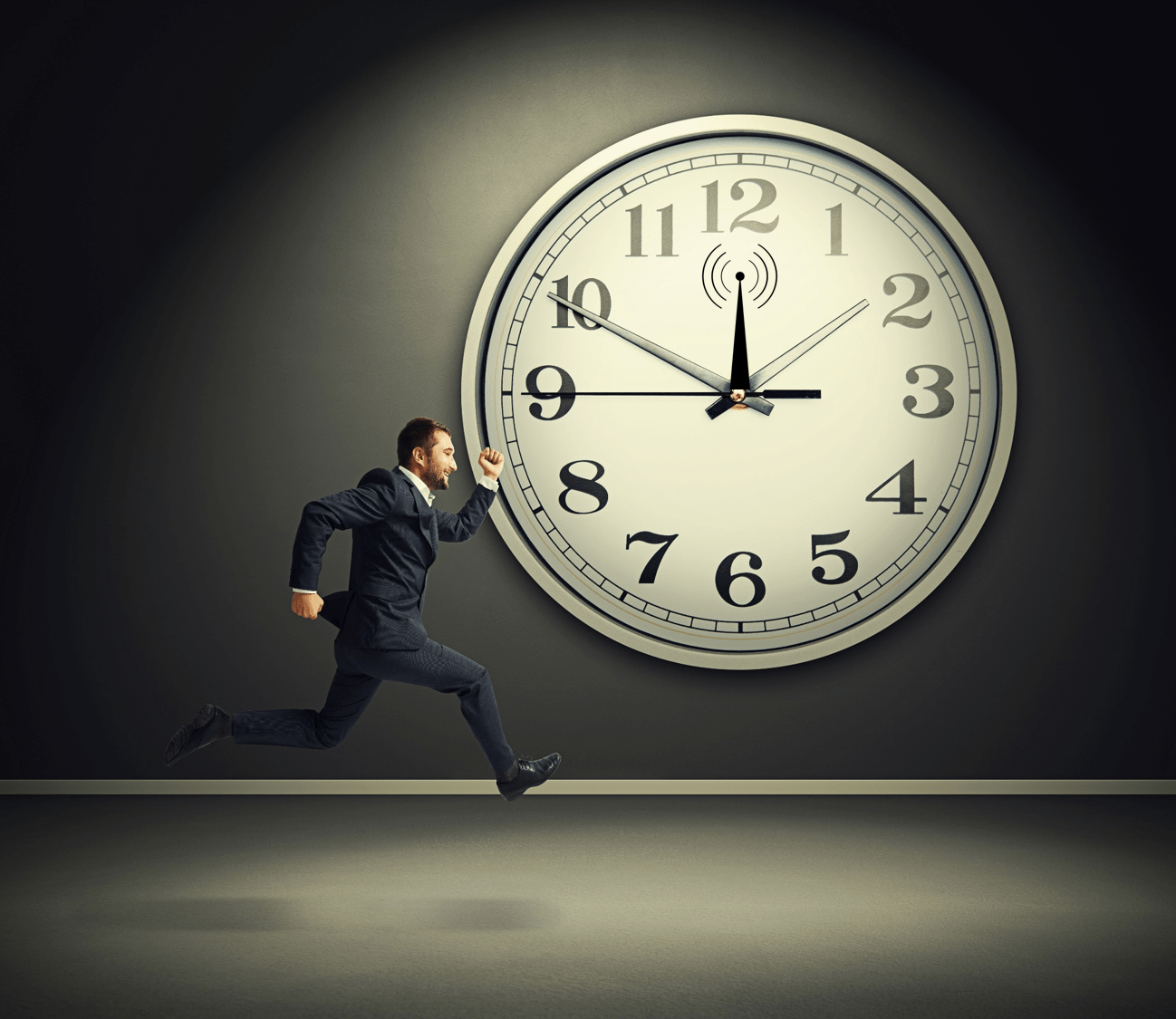 But you wouldn’t have known that from watching most of the coverage last week. From the outside, it appeared quite seamless for a mostly live event. Still, the agenda ran long and each segment’s length restrictions weren’t enforced seriously enough on the first three nights, causing the show to run late, especially for those of us in the East.
But you wouldn’t have known that from watching most of the coverage last week. From the outside, it appeared quite seamless for a mostly live event. Still, the agenda ran long and each segment’s length restrictions weren’t enforced seriously enough on the first three nights, causing the show to run late, especially for those of us in the East.
Overall, the DNC worked miracles with just a month to go. And I couldn’t help but think about my friends in public radio, where it often seems to take extraordinarily long amounts of time to accomplish what often seems on the surface at least to be not so complex.
Last week’s event reminds us that while you always want more time and more staff, a well-organized, motivated team can pull off more than the conventional wisdom suggests. I work with a CEO who is famous for halving proposed timelines – out of habit. If you suggest you can have a job or task finished in two weeks, the near-automatic response is “Why can’t you do it in one?” It is always a good question.
5. Events need strategic goals – So often in radio, event marketing comes down to two metrics: attendance and profits. While I’m not knocking the importance of putting butts in seats and the bottom line, there is more to throwing a great party than an overrated metric-like crowd size.
Pierre Bouvard reminded me of this at one of our Jacobs Summits back in the ‘9os. I would always kick off our conferences with the perfunctory greetings, sponsor thank-yous, and housekeeping details. And oftentimes at that early hour on the first morning of the event, there wasn’t “a cast of thousands” in the meeting room. Not even close.
housekeeping details. And oftentimes at that early hour on the first morning of the event, there wasn’t “a cast of thousands” in the meeting room. Not even close.
It could be disheartening until the room filled in. And one year while lamenting how few people were in the room, Pierre who was on the agenda, reminded me that it’s seldom about how many are in attendance, but how the event is covered by the trades – in other words, how the other 95% of the radio industry perceive it.
And you got that feel from both the RNC and DNC shows. Sure, the audience at home is more likely to be energized by a screaming capacity crowd cheering for everything. But a key to putting on and pulling off big events is the value a brand derives – not just how many show up and profitability.
In the case of the Dems, that was a big part of the conventions – positioning a new candidate as ready, but also winning back some key perceptions that have been lost or certainly foggy over the past decade or two. Each night of the DNC had a goal, and it was clear the event itself, the featured speakers, and even those big vertical signs that are so common at these conventions.
If you think about it, the symbols the Dems focused on were freedom, football, family, flag, and service. All these were recurring themes throughout the week, designed to bolster and build weak perceptions. Whether it works or not, we’ll see in upcoming polls, and the parties themselves will evaluate in their own quantitative research and focus groups.
The branding of Governor Tim Walz was especially the use of this “Coach” moniker, as well as bringing out a psyched up group of his former Mankato West Scarlets state champion high school team.
Ben Ingman of Mankato Minnesota, a former student of Walz, brought the football team Walz once coached on the DNC stage.
In the crowd “Coach Walz” signs were handed out prior to Walz’s speech. @TheDePaulia pic.twitter.com/L1gSvag8KQ
— La DePaulia (@LaDePaulia) August 22, 2024
For radio, these political symbols are reminders of how events can be used to further branding and perception ownership, whether it’s the local image, the new music hill, or anything else that can benefit from a strong presence at a positive event with hundreds or even thousands of keyed up fans.
6. Decline of the old media guard – There was a fair amount of grousing from the so-called “mainstream media” throughout the DNC’s week. As mentioned, three of the four nights ran late, making it especially difficult for daily newspapers to meet their headline deadlines. Prime time coverage got blown up each night on both the TV and cable networks. And Vice President Harris has been roundly criticized for not sitting down with reporters or even a network heavy like Lester Holt or George Stephanopoulos for a “fireside chat.”
Both candidates Trump and Harris are only too aware of how the balance of media power has shifted to the social space. This trend started with the first Obama campaign in 2008, intensified through the Trump years with Twitter, and is now becoming a major trend thanks in large part to the Harris team. The real emphasis this year was on bite-sized content packets quickly posted that conveyed the spirit of the event. The campaigns understand most people do not watch the conventions in real time, but learn about them via their social feeds or on platforms like YouTube. To reach young voters – whether in elections or with media content – the focus needs to be on social.
The DNC invited more than 200 social media creators, and granted them access parallel to legacy media —including VIP interviews, connecting with democratic surrogates and a designated content creation space.
Meet the influencers taking over the DNC👇https://t.co/JmYoeMC9tz pic.twitter.com/l73q62Z3Gv
— POLITICO (@politico) August 23, 2024
Thus, the DNC opened the United Center doors to an army of influencers to cover the convention, situated right at the foot of the stage. In a truly meta moment, these social media savants were covered themselves by legacy journalists, even though these same veteran reporters and anchors are being replaced and sidelined by these same savvy young people who are megawatt stars on TikTok, Instagram, YouTube, and other platforms. The DNC distributed the Vice President’s speech Thursday night on many channels and platforms, including Twitch.
The emergence of social media as the communication engine also was reinforcement about the diminishing importance of ratings for events of this magnitude. Traditional metrics now take a back seat to the viral communication of content – memes, humor, photos, and videos. It is clearly about the ability to “meet the voters where they are.”
7. The element of surprise can be highly effective – But how it is set up and staged is key to it working, motivating tune-in, and keeping viewers staying up late to see what will happen. In the United Center, surprise was a manipulative tool that worked again and again. No one saw Oprah coming, but there she was on Wednesday night. Another treat was the Chicks (formerly of “Dixie” fame). Instead of singing one of their hits, they pulled off a beautiful acapella version of the National Anthem.
these harmonies??? The Chicks’ performance of the National Anthem at the DNC is just too good wow pic.twitter.com/x1DKcrbdVE
— Spencer Althouse (@SpencerAlthouse) August 23, 2024
On the other hand, the big rumor for Thursday night was a “surprise” appearance by Beyoncé. And there was also a “conspiracy theory” online and in the United Center that Taylor Swift might jet in from Europe to join the festivities. TMZ, often accurate about these celebrity sightings, even reported Beyoncé was physically in the arena. Of course, she wasn’t.
The vice president’s keynote actually was announced earlier than expected and she spoke for less time than anticipated, ending the evening early. For all those hoping to see Queen Bey or Tay Tay, it wasn’t meant to be, but most stayed up in the hope the surprise would come true. Instead, they heard the vice president’s inspiring speech. A tad disappointing but it undoubtedly held a big audience.
Beyoncé Performing at DNC’s Final Night in Chicago | Click to read more 👇 https://t.co/W1PALoJDEI
— TMZ (@TMZ) August 22, 2024
8. The importance of modernizing the event – If you’ve watched these conventions over the years, they always do the same routine features year after year, similar to Miss America, the Academy Awards, and other big shows. One of the standards of these party gatherings is the roll call where each state makes a bombastic announcement as they deliver the number of their delegates pledged to the candidates.
In recent years, this process has become perfunctory because we all know who the nominee is going to be. So, the roll call of each state (plus D.C., Guam, the Virgin Islands, etc.) is a done deal before it happens. And there’s not a lot of room to make it exciting.
But don’t tell that to the Dems. A highlight of their convention was completely reimagining this tired routine, the equivalent of breathing life into “Twofer Tuesday” or “War of the Roses.” In addition to having a live DJ at the arena pulling up the music and keeping the energy going strong, each state got to choose their own matching theme song, most of which were rock/pop hits, many from the past.
It was loud, electric, and after seeing the format, I’m sure a lot of viewers tried to guess the songs each state delegation chose as well as would be the lucky spokespeople to deliver the enthusiastic message about their state as well as the candidate.
Michigan Delegation Roll Call #DemocraticConvention #DNCConvention2024 #DNC2024 #HarrisWalz2024 #HarrisWalz #DNC2024CHICAGO #DNC #KAMALHQ #TrumpWarRoom #LoseYourself #eminem #BigGretch #Detriot pic.twitter.com/bwB4YsEjGN
— Chris Borkowski (@cborkowski) August 25, 2024
It was a reminder of the importance of energy, as well as freshening up the event itself. It demonstrated that something very stale could be updated if the creative types put their minds to it.
9. The importance of trying out new content – Aside from the colorful, louder, and more contemporary presentation, the DNC clearly experimented with different elements in an effort to grab attention. The actress Kerry Washington came out on stage with two of Kamala Harris’ young grandnieces to teach America how to pronounce the vice president’s first name. The girls led the cheer where half the arena chanted “KAMA,” while the other half responded with “LA.” Point made.
Vice President Kamala Harris’ great-nieces, Amara and Leela, joined actor Kerry Washington at the DNC on Thursday to “teach you how to say our auntie’s name.” pic.twitter.com/olMqqvhzKV
— The Associated Press (@AP) August 23, 2024
There was also a controversial appearance by “The Exonerated Five” (originally “The Central Park Five”), wrongfully convicted of murdering a jogger in New York City back in the late ’80s. DNA evidence eventually proved their innocence, and they were released but not before being imprisoned for more than a decade, and in the case of one of the men, more than 30 years.
10. The value of variety and pacing – Programming an event of this magnitude is immensely challenging because you’re trying to successfully mix old party veterans (the equivalent of Classic Rock), more contemporary names, as well as political rising stars. And then there’s the musical acts, most of whom are superstars in their own right but limited to just one song in an effort to keep these shows moving.
As a program director, I was taught to think of your content like a sine wave, riding the different eras, tempos, and intensities. Putting together an intricate agenda like a political party convention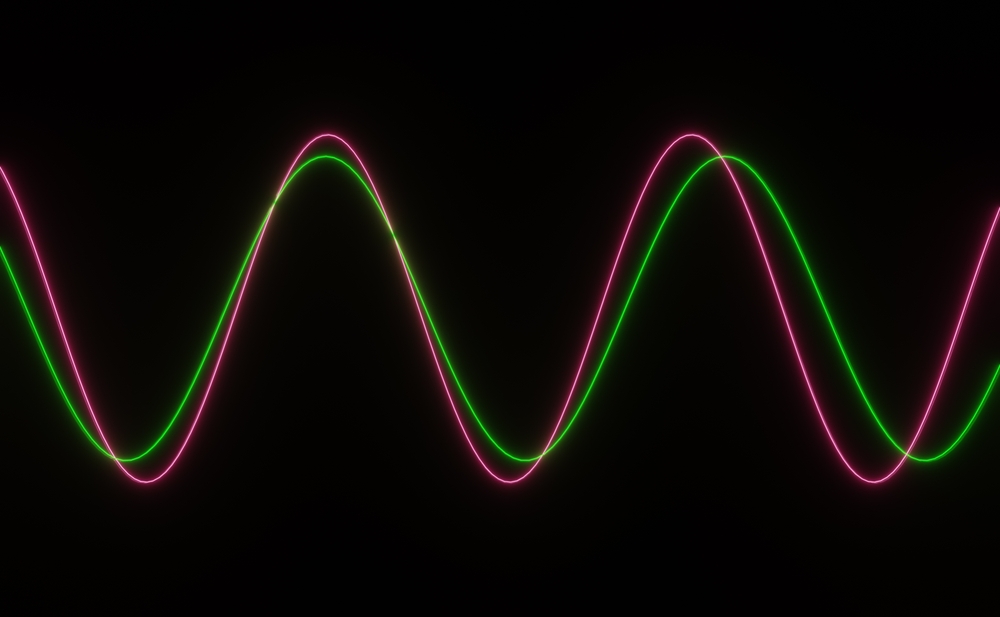 is a heavy lift for both the programmer (in this case, showrunner) and the director, trying to keep everyone happy while making sure the audience numbering tens of millions of people stay tuned in as long as possible.
is a heavy lift for both the programmer (in this case, showrunner) and the director, trying to keep everyone happy while making sure the audience numbering tens of millions of people stay tuned in as long as possible.
The convention was also a master class in teasing. Whoever was the showrunner had a strong sense of how to keep viewers tuned in, waiting for an upcoming segment.
BONUS: The power of the competition – One of the highlights of the DNC Convention was the appearance of several Republican officials (elected and appointed) who threw their support to the Democrats in general, and the Harris/Walz ticket specifically.
They included former House of Representatives member Adam Kinzinger (pictured in tweet below), White House press secretary, Stephanie Grisham, Georgia Lieutenant Governor Geoff Duncan, John Giles, current mayor of Mesa, Arizona, and others. These counter-intuitive speakers were especially powerful because of the element of surprise in seeing them on the DNC stage.
DNC night 4 -Adam Kinzinger speaks of bed rock values, principles and putting country over party.
He acknowledged that Democrats are patriots too, and love this country. He felt like he belonged at the DNC and assured other Republicans they are welcome too.💙#KamalaHarris2024 pic.twitter.com/TlTk3dL2uw
— I’m With Dem 🌊 (@JoJayOhNoE) August 23, 2024
These moments were reminiscent of what happens when a station’s competitor changes formats or fires a personality or show. Inviting their personalities on your station’s morning show can create these same impactful moments.
It’s always instructive to watch and learn from these bigger-than-life productions – what-to-do as well as what to avoid.
If you were watching either or both conventions, you may have made other connections. Leave your observations in the “comments” section below or in my socials.
Originally published by Jacobs Media



